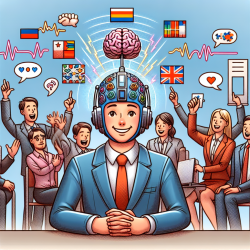Implementing fNIRS Research Outcomes to Enhance Communicative Gesture Interventions for ASD

In a groundbreaking study titled [Autism-Related Differences in Cortical Activation When Observing, Producing, and Imitating Communicative Gestures: An fNIRS Study](https://www.ncbi.nlm.nih.gov/pmc/articles/PMC10527424/?report=classic), researchers used functional near-infrared spectroscopy (fNIRS) to explore cortical activation patterns in children with autism spectrum disorder (ASD) during gestural communication tasks. The findings provide valuable insights for practitioners looking to improve their intervention strategies for children with ASD.The study revealed that children with ASD demonstrate significant differences in cortical activation compared to typically developing (TD) peers. Specifically, children with ASD exhibited:- Hyperactivation in the middle/inferior frontal gyrus (MIFG) during observation and imitation of communicative gestures.- Hypoactivation in the middle/superior temporal gyrus (MSTG) during gesture production.These neural patterns suggest that children with ASD may require more effort to process and understand communicative gestures, which can impact their social interactions and language development. Here are some practical ways practitioners can leverage these findings to enhance their therapeutic approaches:
1. Emphasize Imitation-Based Interventions
The study found that imitation tasks led to greater activation in cortical regions crucial for processing and producing gestures in children with ASD. This suggests that incorporating imitation-based activities into therapy could be particularly effective. Practitioners can:- Use mirror games where the child imitates the therapist’s gestures.- Engage in synchronized activities that require the child to match the therapist’s movements.2. Focus on Dynamic and Interactive Gestural Activities
The study highlighted the importance of naturalistic, face-to-face interactions in eliciting cortical activation. Static activities like picture cards may not be as effective. Instead, practitioners should:- Use real-time, interactive exercises that involve direct social engagement.- Encourage children to participate in group activities where they can observe and imitate peers.3. Address Visuomotor Coordination and Motor Planning
Children with ASD often struggle with motor planning and coordination, impacting their ability to produce and imitate gestures accurately. Practitioners can:- Integrate motor coordination exercises that focus on improving timing and spatial accuracy.- Use tools like video modeling to provide clear examples of correct gestural movements.4. Monitor Progress with Neurobiomarkers
The study suggests that fNIRS could serve as a valuable tool for monitoring the effectiveness of interventions. While fNIRS technology may not be readily available in all settings, practitioners can still benefit from:- Collaborating with research institutions to access fNIRS for evaluating intervention outcomes.- Using behavioral assessments to track improvements in gestural communication and correlate them with intervention strategies.5. Encourage Further Research
The study underscores the need for continued research to fully understand the neural mechanisms underlying gestural communication difficulties in ASD. Practitioners should:- Stay updated with the latest research through conferences, webinars, and publications.- Consider participating in or initiating research studies to contribute to the growing body of knowledge.By implementing these strategies, practitioners can enhance their therapeutic approaches and provide more effective support for children with ASD. The insights gained from this study not only highlight the importance of imitation and dynamic interactions but also pave the way for using neurobiomarkers to evaluate and refine intervention strategies.To read the original research paper, please follow this link: [Autism-Related Differences in Cortical Activation When Observing, Producing, and Imitating Communicative Gestures: An fNIRS Study](https://www.ncbi.nlm.nih.gov/pmc/articles/PMC10527424/?report=classic)
Citation: Su, W.-C., Culotta, M., Mueller, J., Tsuzuki, D., & Bhat, A. N. (2023). Autism-Related Differences in Cortical Activation When Observing, Producing, and Imitating Communicative Gestures: An fNIRS Study. *Brain Sciences, 13*(9), 1284. https://doi.org/10.3390/brainsci13091284
